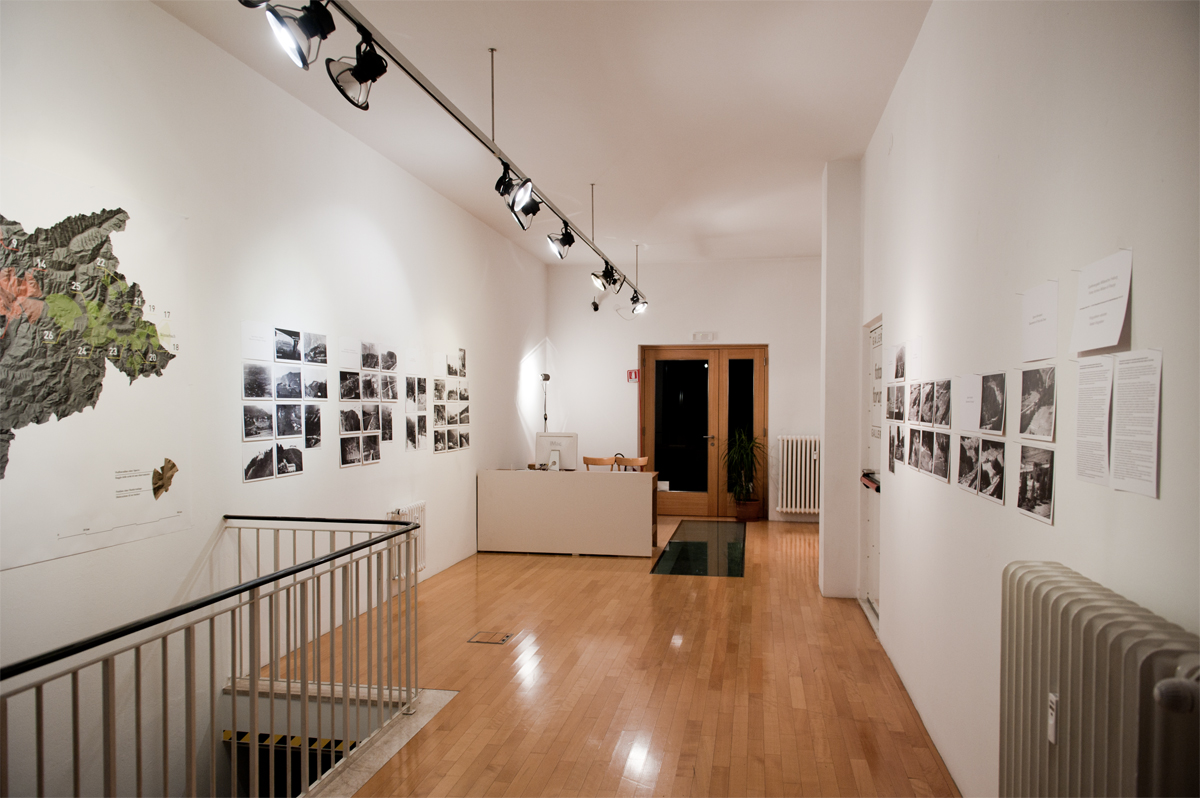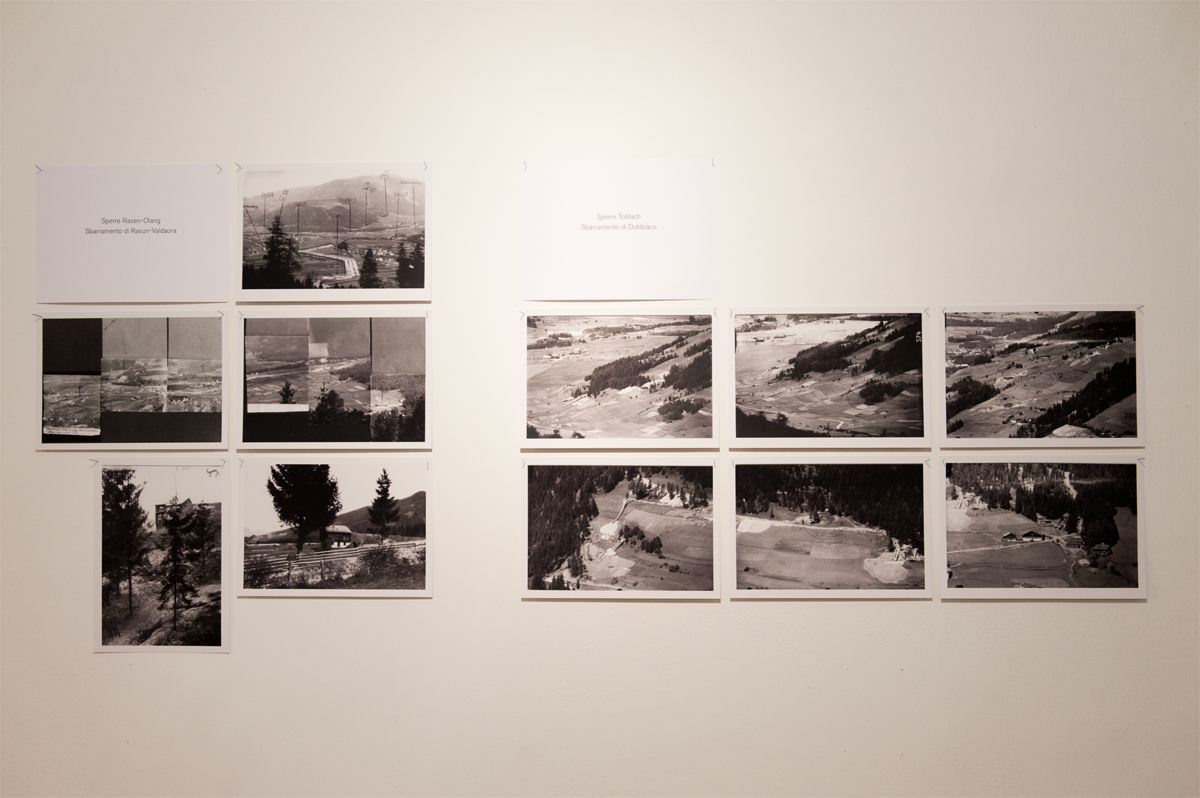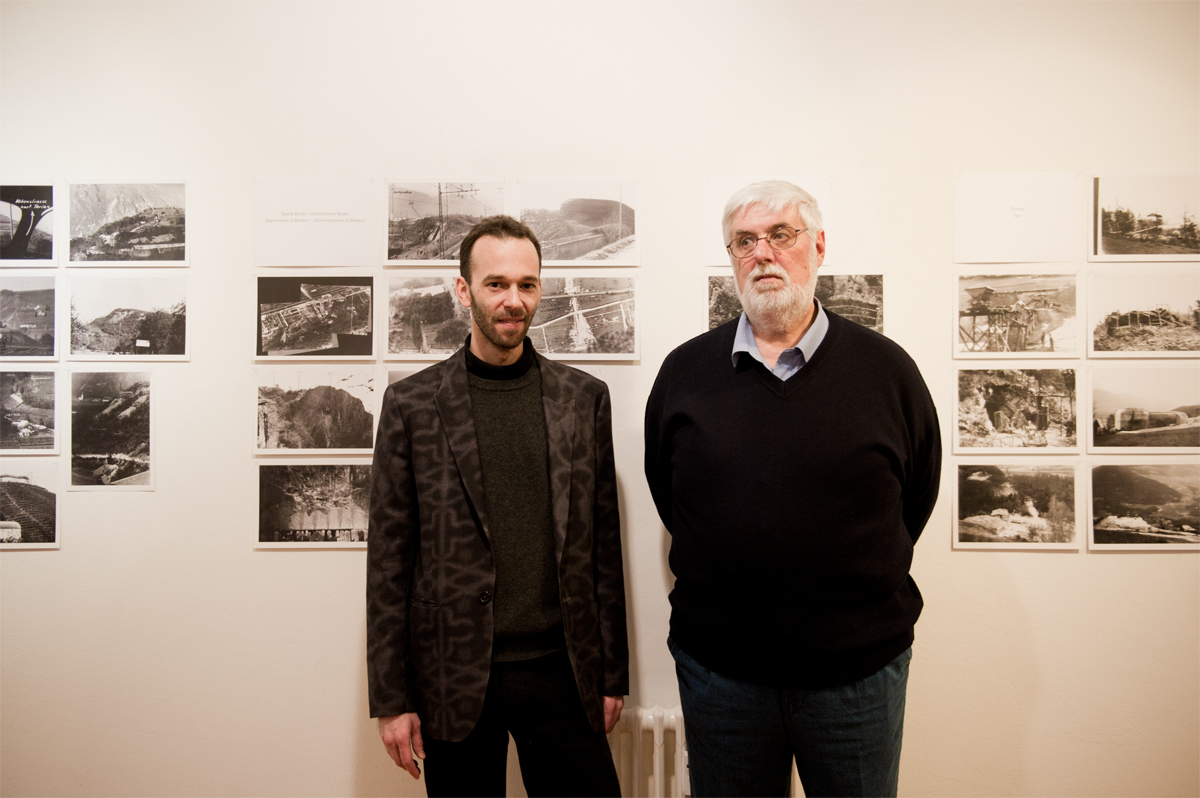Schaufenster: BUNKER NOW # 2
The bunkerforum kasematte association presents
BUNKER NOW # 2
ALESSANDRO BERNASCONI – HEIMO PRÜNSTER
Espionage photography from the construction of the Italian Vallo Alpino [Alpine Wall] in South Tyrol
Opening: 9 Jan. 2016, 11 am
Attending: Alessandro Bernasconi, Heimo Prünster, Matthias Schönweger, Erwin Seppi
Duration of the exhibition: 12-30 January 2016

Archivsignatur BArch RH 11 – III/323 (Fotographische Erkundung der ital. Alpenbefestigungen 1941-43)
In this exhibition, Alessandro Bernasconi and Heimo Prünster show espionage photographs from 1940-1943 that document the construction works of the Italian Alpine Wall (“Vallo Alpino Littorio”) in South Tyrol. The large-scale military construction erected by the fascist regime in utmost secrecy was intended for protection against their own ally Germany, and while it was being constructed was scouted out photographically by the German Reich – equally secretly.

BUNKER NOW #2, EXHIBITION VIEW, CREDITS: FOTO-FORUM, CLAUDIA CORRENT
Starting in 1935, but particularly from 1939 to 1942 in conjunction with the annexation of Austria to the German Reich, the fascist regime in Rome commissioned the completion of the Italian Alpine Wall towards the north at the border to the German Reich. The alpine border had already been fortified towards France in the west and towards the east in the direction of Yugoslavia.

BUNKER NOW #2, EXHIBITION VIEW, CREDITS: FOTO-FORUM, CLAUDIA CORRENT
Close to 800 bunkers were planned for South Tyrol, of which ca. 400 bunkers were constructed in several construction phases; large parts of them remained shells or incomplete until the end of the construction works. One reason construction was ceased was the protest on the part of the Third Reich.
Testimony to this distrust between the two allies is not only the construction of the Alpine Wall, but also these espionage photographs that the German Reich had taken by the VKS (“Völkischer Kampfring” South Tyrol) with the aid of the newest technical possibilities, such as infrared films and strong tele-objectives. The films and plates used were, among others: Perutz Topo, Perutz Silber Eosin, Infrared 800 hard.
The secret circumstances of producing the images are clearly recognisable in the prints: many of them originated in a hurry and with a risk of being discovered. They were sometimes shot from moving automobiles or trains and are out of focus; others were shot from perspectives that were actually unfavourable but hardly observable, and thus safe. Others arose from great distances of more than 20 kilometres.
In this way, serviceable documentary photos were made that served as the working basis to make recognisable the location, size, condition and building process of the adversary’s military infrastructure.
The photos are special for another reason: they constitute the only photo documentation where the dimension of the large-scale construction of the Alpine Wall is recognisable, and the interventions in the landscape that the structure entailed are visible. After construction was ceased, the bunkers were carefully camouflaged and to the present day can hardly be spotted in the landscape.
Over a time period of two years in total, an estimated 1.5 mil. cubic metres of concrete was poured by 19,000 regular paid workers at 400 construction sites in South Tyrol. To be able to build the bunkers, at least the same volume of soil had to excavated beforehand from building pits or blasted out of the cliffs.
All together, a volume of concrete was poured in the South Tyrolean part of the Alpine Wall that would cover a floor area of 100 x 100 metres and a height of 150 metres.
The dimension of the logistics of material and manpower is hardly conceivable, especially if you consider the technical possibilities of the time and the military operations going on simultaneously.
These photographs of its origins are unique and thus significant visual documents on the Italian Alpine Wall.

BUNKER NOW #2, HEIMO PRÜNSTER + ALESSANDRO BERNASCONI, CREDITS: FOTO-FORUM, CLAUDIA CORRENT

